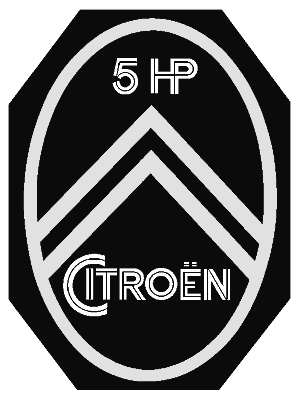CITROËN 7.5HP
The history
Due to frequent relocations, a flood (1942) and WWII commotion most archives have been destroyed. Therefore the origin of the Citroen 7.5HP is not proven. Most early Citroen models (Type A and B10) were designed by Jules Salomon, but the small 7.5HP is mostly a creation of Edmond Moyet who was an employee at Citroen at that time. His activity at the research department in the Rue du Théatre kept him near Salomon. He is told to have played an important role at his former employer on development of the first Amilcar before he joined Citroen. This is quite obvious, as both cars are basing on a very similar architecture. While the models A and B10 can be considered as conventional vehicles whose success was basing mainly on their functionality, the 7.5HP jumped into a niche of contemporary automobile production and filled the space between cyclecar and real motorcar.
Cyclecars or Voiturettes were light vehicles, privileged by low taxes. In the twenties they lost their economic reason. The limited maximum weight of 350kgs required a light execution, which demanded too much compromises on the ruggedness. Citroen envisioned in the beginning a small car with a one-cylinder engine of 750cm3 displacement, of which two prototypes were built. One was designed aircooled, the other watercooled. So there arose a kind of modernised "Le Zèbre", which in turn did not correspond with the ideas of André Citroën.
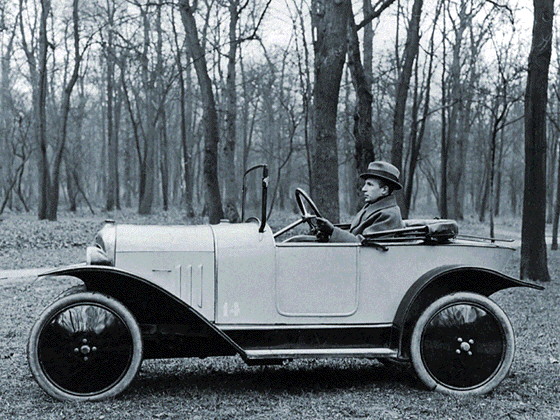
Citroën stipulated a real automobile, technically and esthetically oriented on its bigger sister, the 10HP. Except for the smaller dimensions and the smaller engine, the differences to the model B2 were in the suspension (double spring packs instead of single), in the engine lubrication (pressure lubrication instead of splash lubrication), on the first models in the ignition (battery instead of magneto) and finally in the price (7.5HP: 8500ff, B2: 13'900ff).
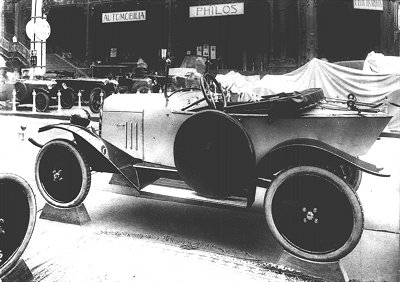
Two years after production start of the type A, the Citroën 7.5HP was presented at the Paris Automobile Exhibition of 1921. On 29. November 1921 type testing was undertaken on car Nr.9 with engine Nr.9 (Registration A, Nr. 1939) [L111]. In June 1922 production started. The production was maintained very successfully until May 1926 with minor technical modifications and an extended model range. The model change took place every autumn, when the innovations were presented to the public at the Paris Motor Show. In this period there were 80232 cars manufactured. The production had to be ended because the whole factory had to concentrate their capacities and efforts on the new model B14. The idea was to market a car with all-steel bodywork and four-wheel brakes.
André Citroën could not promote at the same time with his models B10 and B12 the future of all-steel coachwork, and continue to produce a conventional car. There were in fact already prototypes of an all-steel 7.5HP "Tout Acier", but the enormous investment for a complete redesign of the small car would have guided to an equally high retail price like on the "Tout Acier" of the series B10, B12 and B14. This would not have been accepted by any customer. So the beloved "Petite Citron" became 1926 a victim of progress [L369].
The 7.5HP (HP stands for horsepower), whose name is based on french tax performance, stands for the beginning of popularisation of the automobile. Its economic fuel consumption, ist ease of maintenance and its agility made it soon a huge success. Due to its easy handling and its attractive colours it is considered to be the first ladies car.
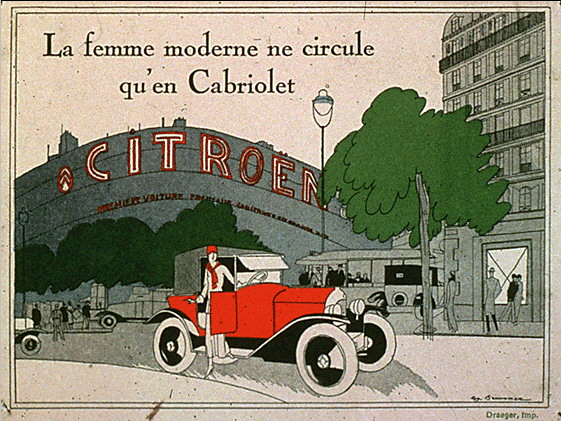
At that time the Citroën 7.5HP was one of the best known motorcars, which accordingly provided popularity to the Citroën company. It was to some extent the first european popular automobile. Due to its easy handling and its small dimensions it gained high popularity by women.
The standard car was lhd. For export there were also rhd cars manufactured.
At that time Citroën cars had one of the most handsome radiator masks. For reasons of economic manufacturing it was made from two parts. A nickel plated shell covered the intrinsic radiator. This manufacturing trick reduced considerably the high manual manufacturing costs. Due to the formerly very high price of copper the radiator was mainly made from steel.
Space conditions in the factory floor at Quai de Javel were not sufficient for mass production. So there were only a few cars assembled at the main factory, all futher cars were assembled in the works of Levallois [L67]. This factory of 70'000 m2 was erected in 1921 within only six months for manufacture of the 7.5HP, on a lot which was first leased from the car manufacturer Clément Bayard, then bought by Citroën in 1929. From 1923 on, the gearboxes of the 7.5HP were assembled on the St. Charles factory. In 1926 a new factory was opened at St. Quen to produce pressed steel parts and later - but not for the 7.5HP - all-steel bodies. In that factory there were at that time 250 presses with a pressing power up to 1400 tons. Supposedly the later "round" mudguards have been produced there.
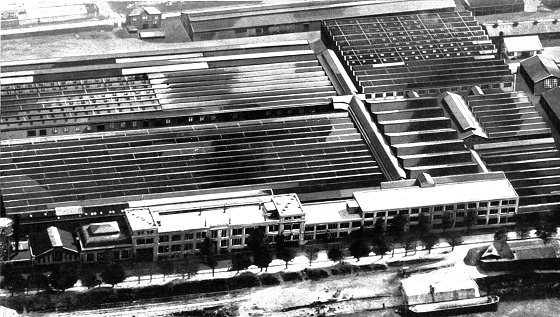
In metropolitan France, André Citroën built up a close-knit customer service network. By 1925, the number of agencies had grown to more than 5000 in the first year, 1919.
In french home country André Citroën formed a close meshed service network. The agencies increased from the beginning in 1919 to more than 5000 in 1925. Some of them were, at the period of production of the 7.5HP [L110,L410]: Coquereaux Frères, Garage Central at Dijon, Lagoutte and Millot at Roanne, Fernand and Louis Lucas at Dinan, Paul Luchard on Avenue Malakoff in Paris, Fédéric Couget at Pau, H. Coren at Orange, Neumager at Saint-Brieuc, Chossat de Montburon at Bourg, Morin Frères at Poitiers, Cruciani at Guéret, René Cabour at Lille, Lauvergnat at Châteauroux, Ardon at Reims, Ragazzi at Nice, Closse at Nancy, Jules Tomine at Rennes, Ricou at Grenoble, Merlaud at Périgueux, Rogier at Chalon-sur-Saône, Augustin at Sablé-sur-Sarthe, Dalamotte of Vesoul, Rouen Frères of Fécamp etc.
This service network was exemplary and later found imitators of its structure by many competitors. Also abroad the Citroën daughters practised a service which was unequaled at that time. At the period of the 7.5HP there were the following:
- 1923 England: Citroën cars Ltd at Slough
- 1924 Belgium: Société Belge des Automobiles Citroën at Bruxelles
- Holland: N.V. Automobiles Citroën at Amsterdam
- Dec. 1924 Italy: Societa Anonima Italiana Automobili Citroën at Milan
- Switzerland: Société Anonyme pour vente en Suisse des Automobiles Citroën at Geneva
- Denmark: Société Automobiles Citroën A/S at Kopenhagen
- 1925 Spain: Sociedad Española de Automóviles Citroën at Madrid
- Algeria: Société Nord-Africaine des Automobiles Citroën at Alger
In Belgium the factory of Bruxelles-Forest of the "Société Belge des Automobiles Citroën" started production, an industrial and trading company for local assembly of the 7.5HP, the B12 and later of the B14. In 1926 as well started production in the british factory Slough, which was considered one of the most modern production facilities of Great Britain, with assembling and coachbuilding of the 7.5HP Trèfle. The british called it 7,5HP or "Cloverleaf". All current Citroën models were manufactured in Britain with only minor modifications (rhd, Lucas electric equipment) and were marketed successfully, they were presumed to be of outstanding workmanship. The italians also began producing Citroëns in 1926. In the Milano factory there were also 7.5HP assembled, but with a badge on the radiator mask with the mark «Soc. Italiana Automobili Citroën Milano» [L54].
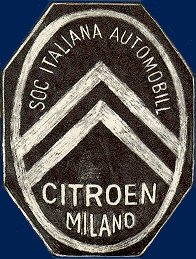
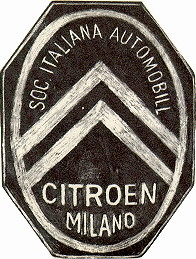
In 1960 in France there were still around 5000 7.5HP regularly on the road. Still a long time after production end there were accessories available like shock absorbers or parts for increasing the performace like special cylinder heads. Spares figured until 1939 in the catalogues and were also available [L54].
With more than 80'000 built cars the 7.5HP had found many friends - the very best of them apparently in Germany: the Opel company liked it so much that they simply copied it under the designation 4/12PS and marketed it in spring 1924 in grass-green. The expression "the same in green" originates from that. The Opel "tree-frog", so its nickname, was manufactured until 1931 in a total number of 119'484 cars and successfully sold. Nowadays there are europe-wide only seven cars registered (two of them in Switzerland).
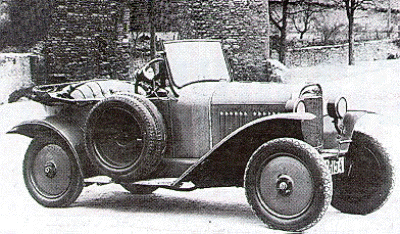
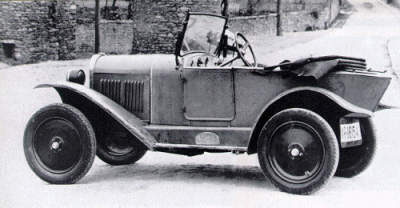
The most distinctive features are the flat honeycomb-radiator, the engine with pressure lubrication and a cylinder capacity of 950cc, the electric equipment from Bosch, the less elegant rear and the standard right hand drive. A claim, risen by Citroën at Berlin, ended under arcane reasons with a dismissal [L2, L301, L347].
